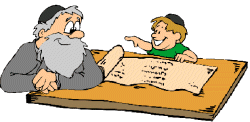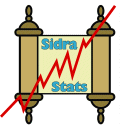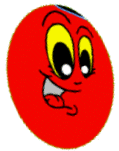Pekudey
פְקוּדֵי
Exodus 38:21 – 40:38
The Accounting
These are the accounts of the Tabernacle of Testimony, which were calculated by Moses’ order by the Levites under Ithamar, son of Aaron the priest. Betzalel son of Uri son of Chur, of the tribe of Judah, used these materials to make all that Hashem had commanded Moses. With him was Oholiav son of Achisamakh, of the tribe of Dan, who was a skilled carpenter, and was also expert in brocading and embroidering with sky-blue, dark red and crimson wool, and fine linen.
The Materials
All the gold was used in the work to complete the sacred task. The amount of gold donated as a wave offering was 29 talents and 730 shekels by the sanctuary standard.
The silver census money collected from the community came out to 100 talents and 1775 shekels by the sanctuary standard. This consisted of a beka, which was a half shekel by sanctuary standards, for each of the 603,550 men over 20 years old included in the census.
The 100 talents were used to cast the bases for the sanctuary and the cloth partition. There were a total of 100 bases made out of the 100 talents, one talent for each base.
Out of the remaining 1775 shekels, the hooks, caps and inlaid hoops for the pillars were made. The copper donated as a wave offering came out to 70 talents and 2400 shekels. It was used to make the bases for the Communion Tent’s entrance, the copper altar along with its copper screen and all the altar’s utensils, the bases for the surrounding enclosure, the bases for the enclosure’s entrance, the stakes for the tabernacle, and the stakes for the surrounding enclosure.
From the sky-blue, dark red and crimson wool, they made the packing cloths for sacred use. They also made the sacred vestments for Aaron, as HaShem had commanded Moses.
Making the Ephod
He made the ephod out of gold thread, sky-blue, dark red and crimson wool, and twined linen. They beat out thin sheets of gold, and cut them into threads, which were then included in the sky-blue, dark red and crimson wool, and the fine linen. The ephod was made as a patterned brocade. They made shoulder pieces for it, sewn to its two corners. The ephod’s attached belt, woven together with it, was made in the same manner, also out of gold thread, sky-blue, dark red and crimson wool, and twined linen. It was thus made as HaShem had commanded Moses.
Setting the Sardonyxes
They prepared the sardonyx stones to be placed in the settings. The stones were engraved as on a signet ring with the names of Israel’s sons. He placed them on the ephod’s shoulder pieces as remembrance stones for Israel’s sons. It was done as HaShem had commanded Moses.
Making the Breastplate
He made the breastplate out of brocaded work, just like the ephod. It was also made from gold thread, sky-blue, dark red and crimson wool, and twined linen.
The breastplate was made to be a square when folded over. It was a span long, and when folded over, a span wide. The breastplate was set with four rows of precious stones:v
The first row: carnelian, emerald, topaz.
The second row: carbuncle, sapphire, beryl.
The third row: jacinth, agate, amethyst.
The fourth row: chyrsolite, onyx, jasper.
The stones contained the names of Israel’s sons. There were twelve names, engraved as on a signet ring, one for each of the twelve tribes. Matched pure gold cables, braided like cords, were attached to the breastplate. They made two gold settings and two gold rings, and they placed the two rings on the breastplate’s two upper corners.
The two gold braids were then attached to the two rings on the breastplate’s corners. The two braids on the two corners were attached to the two settings, and they were thus attached to the ephod’s shoulder pieces toward the front.
They made two gold rings and placed them on the breastplate’s two lower corners, on the edge toward the inside of the ephod. They made two gold rings, and placed them on the bottoms of the ephod’s two shoulder pieces toward the front, near where they were attached, above the ephod’s belt.
They laced the breastplate by its rings to the rings of the ephod with a twist of sky-blue wool, so that the breastplate would remain above the ephod’s belt. The breastplate would thus not be displaced from the ephod. All this was done as HaShem had commanded Moses.
Making the Robe
He made the robe for the ephod, weaving it completely out of sky-blue wool. The robe’s opening was in the middle, like the opening of a coat of mail, with a border all around so that it not be left open.
On the skirt of the robe, they made pomegranates out of twined sky-blue, dark red and crimson wool. They made pure gold bells, and placed the bells between the pomegranates. The bells were thus all around on the bottom of the robe between the pomegranates. There was a bell and a pomegranate, a bell and a pomegranate, all around the bottom of the robe.
It was thus made for the divine service, as HaShem had commanded Moses.
Making the Other Vestments
They made the tunics for Aaron and his sons by weaving them out of fine linen. They made the linen turban, the fine linen hats, and the line pants, all out of twined linen. They made the belt, embroidered out of twined linen, and sky-blue, dark red and crimson wool. It was all done as HaShem had commanded Moses.
Making the Head-plate
They made the head-plate as a sacred coronet, out of pure gold. Written on it, in the same manner as a signet ring’s engraving, were the words, ‘Holy to G-d.’
They placed a twist of sky-blue wool on the head-plate, so that it could be placed over the turban. It was all done as HaShem had commanded Moses.
The Tabernacle is Completed
All the work on the Communion Tent Tabernacle was thus completed. The Israelites did exactly as HaShem had commanded Moses.
Moses Approves
They brought the Tabernacle to Moses. There was the Communion Tent along with its equipment, its fastenings, beams, crossbars, pillars and bases; the roof of reddened rams’ hides, the roof of blue processed hides, the cloth partition; the Ark of Testimony and its carrying poles, the ark cover, the table and its equipment, the showbread, the pure gold menorah along with its prescribed lamps, all its utensils, and the illuminating oil; the golden altar, the anointing oil, the perfumed incense, the Communion Tent’s drape; the copper altar along with its carrying poles and all its equipment; the washstand and its base; the hangings for the enclosure, its poles and bases, the drape for the enclosure’s entrance, its tying ropes and stakes, all the equipment used in the Communion Tent Tabernacle’s service, the packing cloths for sacred use, the sacred vestments for Aaron the priest, and the vestments that his sons would wear to serve.
The Israelites had done all the work exactly in the manner that HaShem had commanded Moses.
When Moses saw that all the work had been done exactly as HaShem had ordered, he blessed all the workers.
Orders for Erecting the Tabernacle
HaShem spoke to Moses, saying: On the first day of the first month, you shall erect the Communion Tent Tabernacle. Place the Ark of Testimony there, and shield the ark with the cloth partition. Bring in the table and set it up, and bring in the menorah and light its lamps. Place the gold incense altar directly in front of the Ark of Testimony, and then set up the drape at the Tabernacle’s entrance. Place the sacrificial altar in front of the entrance of the Communion Tent Tabernacle. Then place the washstand between the Communion Tent and the altar, and fill it with water. Set up the enclosure all around, and place the drape over the enclosure’s entrance. Take the anointing oil, and anoint the tabernacle and everything in it. You will thus sanctify it and all its equipment making it holy. Anoint the sacrificial altar and all its equipment. You will thus sanctify the altar, and it will be holy of holies. Anoint the washstand and its basin, and make them holy. Bring Aaron and his sons to the Communion Tent’s entrance, and have them immerse in a mikvah. Then have Aaron put on the sacred vestments, and anoint him, thus sanctifying him as a priest to Me.
Bring forth Aaron’s sons and place the tunics on them. Then anoint them, just as you anointed their father, so that they will be priests to Me. It will be done so that their anointing will make them an eternal hereditary priesthood for all generations.
Moses proceeded to do exactly as HaShem had commanded him.
The Tabernacle is Erected
In the first month of the second year of the Exodus, on the first of the month, the Tabernacle was erected. Moses erected the Tabernacle. He did this by setting up the bases, placing the beams in them, and fastening them together with the crossbars. He then set up the pillars. He spread the tent over the tabernacle, and placed the tent’s roof over it. It was all done as HaShem had commanded Moses.
Placing the Ark
He took the Tablets of Testimony and placed them in the Ark. He then placed the carrying poles in the ark, and set the cover on top of the ark. He brought the ark into the Tabernacle, and set up the cloth partition so that it would shield the Ark of Testimony. It was all done as HaShem had commanded Moses.
Placing the Table
He placed the table in the Communion Tent, outside the cloth partition, on the north side of the Tabernacle. Then he placed the prescribed arrangement of bread on it before HaShem. It was all done as HaShem had commanded Moses.
Placing the Lamp
He placed the menorah in the Communion Tent directly across from the table, on the southern side of the Tabernacle. He then lit the lamps before HaShem. It was all done as HaShem had commanded Moses.
Placing the Incense Altar
He placed the golden altar in the Communion Tent in front of the cloth partition. Then he burned perfume incense on it. It was all done as HaShem had commanded Moses.
The Drape and the Altar
He placed the drape over the Tabernacle’s entrance. He then placed the sacrificial altar in front of the entrance of the Communion Tent Tabernacle, and he sacrificed the burnt offering and meal offering on it. It was all done as HaShem had commanded Moses.
Placing the Washstand
He set the washstand between the Communion Tent and the altar, and he filled it with water for washing. Moses, Aaron, and Aaron’s sons, washed their hands and feet from it. They would wash in this manner whenever they came to the Communion Tent or offered sacrifice on the altar. It was all done as HaShem had commanded Moses.
Setting up the Enclosure
He set up the enclosure surrounding the tabernacle and altar, and he placed the drape over the enclosure’s entrance. With this, Moses completed all the work.
The Cloud on the Tabernacle
The cloud covered the Communion Tent, and HaShem’s glory filled the Tabernacle. Moses could not come into the Communion Tent, since the cloud had rested on it, and HaShem’s glory filled the Tabernacle. Later, when the cloud would rise up from the Tabernacle, it would be a signal for the Israelites to move on, and this was true in all their travels. Whenever the cloud did not rise, they would not move on, waiting until the day it did. HaShem’s cloud would then remain on the Tabernacle by day, and fire was in it by night. This was visible to the entire family of Israel, in all their travels.
Haftarah Connection

I Kings 7.51-8.21
In this Parsha the Mishkan is completed and all of the things are put into their places. HaShem makes his resting place and a cloud descends on the tent.
The Haftara deals with the completion of the First Temple that King Solomon built. When it was finished a cloud descended on it signifying HaShem was once again with his people.
Sidra Stats

- Twenty-Three of 54 Sedras in the Torah
- Written on 159 lines in the Sefer Torah
- 92 P’sukim (verses)
- 1,182 words
- 4,432 letters
Next week’s Parashat: Vayikra


